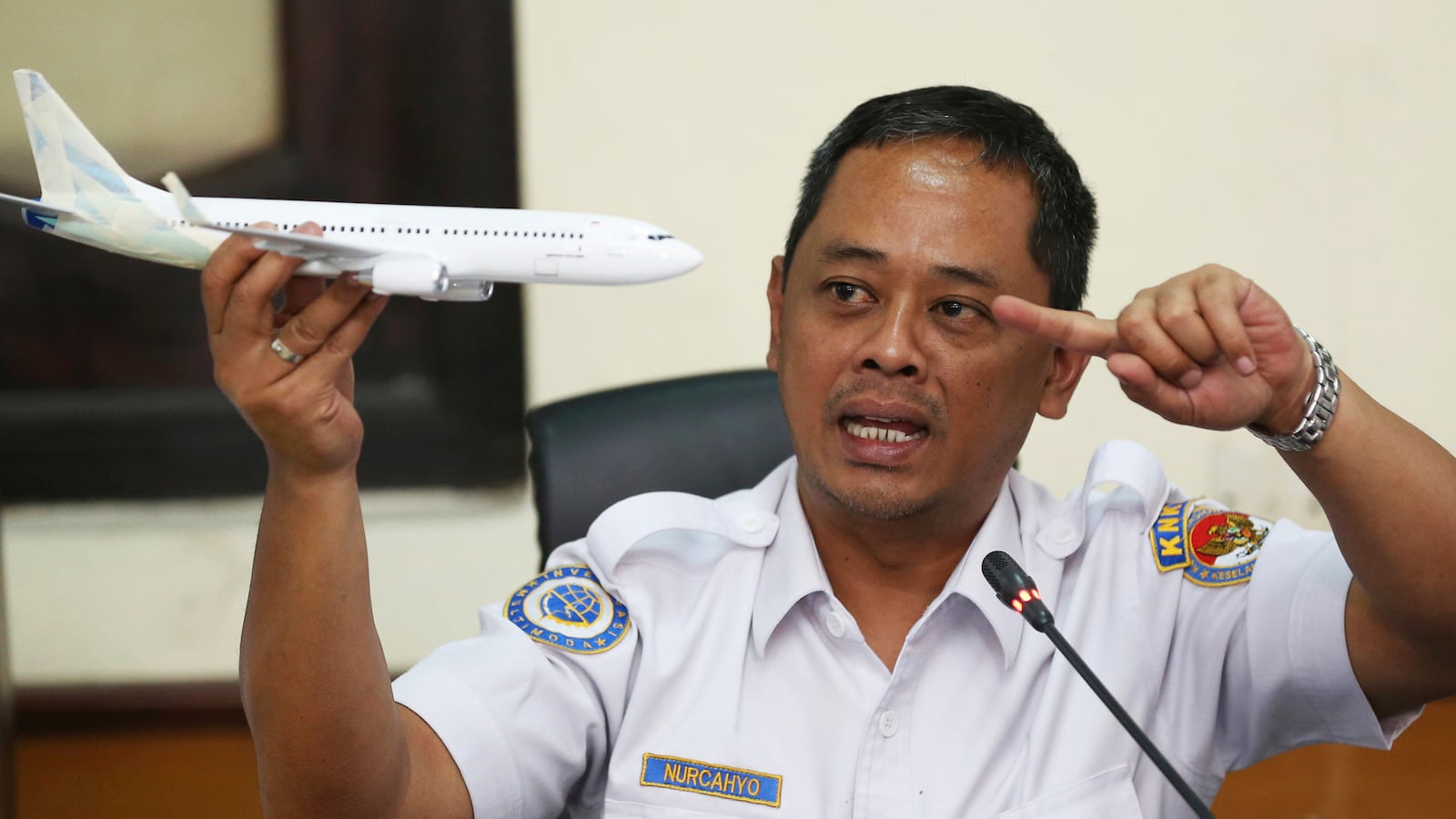In the face of a report by Indonesian investigators into the crash of Lion Air Flight 610 that the pilots efforts to control the Boeing 737 MAX-8 were defeated by a computer-directed system Boeing continues to insist that they could have used established procedures to save the airplane.
The Indonesian report shows that the jet dived vertically into the Java Sea having been in the air only 11 minutes, taking 189 people to their deaths, including children and babies.
The system at the center of the investigation is new to the 737 series of jets. It is called Maneuvering Characteristics Augmentation System, MCAS, basically new lines of software that were written into the flight management computers.
Investigators believe that the behavior of the MCAS on the fatal flight was triggered by false readings fed to it from a sensor that measures the alignment of the wings to the flight path, the angle of attack.
Believing that the angle of attack indicated the onset of an aerodynamic stall, the MCAS, without any pilot input, forced down the nose of the airplane with movements of the horizontal stabilizer. The investigators say the Lion Air pilots countered this movement 26 times before they lost control.
Data from the airplane’s flight recorder, recovered from the wreck, reveals the short, scary path through the sky as the pilots struggled to keep control.
For the first two and a half minutes after takeoff the climb seems to be normal.
This is consistent with the way the MAX-8’s flight control systems are designed.
The MCAS cannot be activated until the flaps, used during takeoff to increase the wing’s lift, are retracted. This means that if erroneous data on the airplane’s angle of attack was being fed into the jet’s computers it would not have had any effect until the pilots reached a height of about 1,500 feet, where the flaps finally retracted.
For the remaining minutes of the flight the pilots were locked in a contest with the actions of the MCAS. “The pilots fought continuously until the end of the flight” said Captain Nurcahyo Utomo, the head of the subcommittee of the Indonesian Transportation Safety Committee, which is in charge of the investigation.
Those final minutes of the flight are the crux of the dispute between Boeing and pilots who contend that the flight manual provided by Boeing to MAX-8 pilots does not prepare them for rogue actions initiated by the MCAS. Indeed many pilots have said that they were completely unaware of the existence of the MCAS.
Boeing’s defense rests on the assertion that the correct procedure to recover from “uncommanded trim”—the nose being pushed down without pilot input—is a “memory item.” By this they mean that the pilots should be able instinctively to respond as they should when flying any previous model of the 737 with a series of steps, beginning with shutting down power that automatically moves the stabilizer, a procedure called Runaway Stabilizer Correction.
Crucial to this Boeing assertion, and repeated in their response to the Indonesian report, is the phrase that this procedure would have saved the aircraft “regardless of source.”
But the problem with this is that the MCAS as a system did not exist when those manuals were written and has only now been added to them as part of an emergency Airworthiness Directive from the Federal Aviation Administration.
As a highly experienced 737 pilot told the Daily Beast: “Boeing apparently elected to not inform the outside world they had added this system. They did not address any MCAS knowledge or training provisions to address MCAS failure.”
There is a vital point here: the MCAS is specifically designed to correct an impending aerodynamic stall by forcing the nose down, allowing the pilots to recognize the situation and, assisted by the MCAS (rather than desperately trying to counter it) recover control. This is a once-only warning and very different to the situation faced by the Lion Air pilots where there was actually no threat of a stall. Instead the MCAS, persistently driven by erroneous angle of attack information, defied their continued efforts.
No 737 MAX-8 pilots had faced this problem until it appeared in the same airplane on its previous flight, on October 28. Boeing points out that, according to the Indonesian report, the pilots on that flight went through the Runaway Stabilizer procedure, turning off switches within minutes of the problem occurring and flew the rest of the flight manually—albeit, according to passengers, creating what they described as a rollercoaster.
It is important here to point out why the MCAS was introduced to the MAX-8 in the first place. As first reported in Aviation Week, and followed up in the Daily Beast, during the early test flights of the MAX-8 it was discovered that at low speeds there was a marked difference in the behavior of the airplane when compared with previous versions.
The problem is technically described as “thrust-versus-pitch coupling.” In essence what this means is that engine power has an effect on the pitch—the horizontal alignment of the flight—that was not experienced before. The MAX-8 has a new generation of engines with much more power. They are also heavier, a factor that also influences the airplane’s aerodynamic balance.
The MCAS compensates for that problem by automatically setting the horizontal stabilizer to match the speed, but pilots must still make “purposeful” manual actions to retain control. It is important to note that the condition was discovered in tests when the jet was lightly loaded. The Lion Air flight was fully loaded with passengers, cargo and fuel. This is another reason why investigators will need to understand a lot more about the behavior of the MCAS system.







